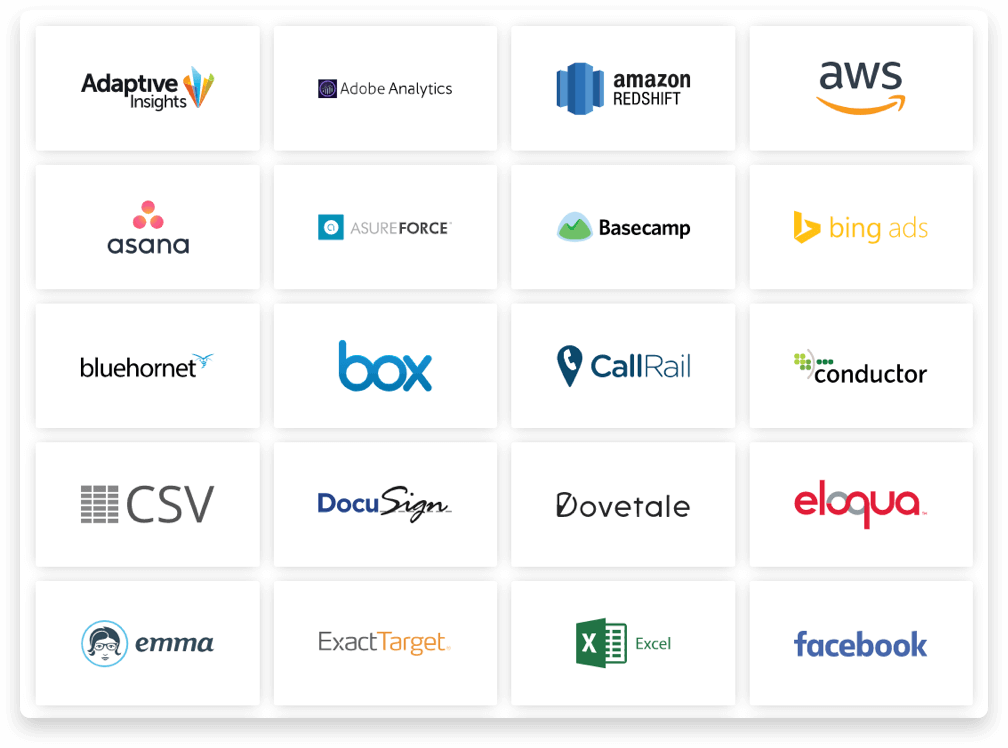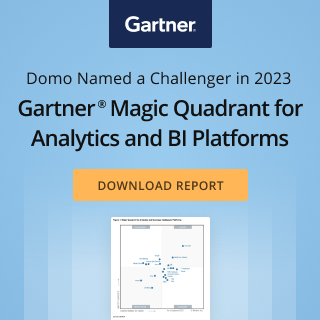Reaping the benefits of API connectors
A business intelligence (BI) tool needs to connect with all the other software that generates data on your systems so that it can do its job properly. This is true whether the software is a massive transactional system that sends thousands of data points to your tool a second, or it’s a small-time tracking tool that only updates a few data points a few times a day.
Traditional data connection
In the past, data engineers had to manually upload their data into their BI tool every time they wanted to update the data. Data integration and data processing have traditionally been labor-intensive tasks that can often require entire teams of employees—even with a small business. When a company needs access to its data, it needs to turn to a modern solution.
Modern BI and data connectors
Now, with cloud-based BI solutions, BI tools try to do as much of this work automatically as possible. The idea is that a BI tool can automatically pull data from other software and load it into the BI tool’s storage systems, all without human input.
However, not every piece of business software generates and stores its data in exactly the same way. BI tools can’t use one-size-fits-all solutions to transfer data from one tool to another, since every tool has its own nuance. This means that, for the most part, BI tools have to use separate, unique connections for each other piece of software that it wants to connect with.
These connections are called “connectors” or “integrations” and they’re an important part of selecting the right business intelligence solution for your company. The nature and quality of the integrations that your BI tool has with the other software that you use are some of the most important factors that determine how useful that BI tool will be for your business.

Connector types
Not all connectors connect in the same way, and that means not every connector is the same quality. Some connectors are mostly seamless and will cause few, if any problems; other connectors might be more temperamental.
Connectors are classified based on the relationship between the organization that made the connector and each of the two tools that the connector is going to connect.
There are three different kinds of connectors:
Native connectors
Native connectors are often referred to as “first-party connectors.” They connect two pieces of software that have a common codebase and that are usually owned by the same company. They’re designed and implemented by the company that owns both pieces of software, and they’re an integral part of both pieces of software.
Native integrations are usually the most painless integrations, and data tends to flow very easily across them. If there is a problem, either vendor can step in to fix it. However, native integrations are only possible between vendors owned by the same company or vendors that are willing to work that closely, so each tool will only have a very limited amount of native integrations.
API connectors
API connectors are pre-built integrations that are built to interface with the API of a separate piece of software. They’re built with the involvement of only one of the two vendors, but the vendor that builds it builds it directly into their tool.
Many BI vendors offer a massive amount of API connectors. Some modern BI tools offer over 1,000 connectors with software of all types and industries. Since BI software relies so heavily on powerful connectors, it makes a lot of sense for BI vendors to devote time and resources towards building these connectors for their customers.
An API connector might not always be as seamless as a native connector, but in most cases, they’re very good. A business might use an API connector to transfer millions of different data sets over a thousand different sessions, and never once have a problem with it. In addition, if an API connector fails, it’s easy enough to troubleshoot it with the help of your BI vendor.
Third-party connectors
Third-party is the last type of connector, and they’re the ones that vary most widely in quality. They’re made by third parties, people unrelated to either one of the two pieces of software that you’re trying to connect.
These connectors can range from somewhat uninvolved connectors between two simple tools that both have open APIs, to massively complicated workarounds to connect data between tools that would have no chance of communicating otherwise.
Why would I need to use a third-party connector?
There are some common reasons why a company might be forced to use a third-party connector to transfer data between software. In some cases, it’s just that one of the tools is so obscure that no one’s bothered to build a connector for this tool into their software. Hopefully, in that case, it shouldn’t be too much of an issue to build a connector that can work well enough.
In some cases, though, it’s because a business is trying to connect one of their tools to some piece of legacy software. These tools rarely have any modern connectivity niceties like APIs, so those that want to build connectors with these tools have to find complex workarounds that rarely work as well as they’d hope.
How can API connectors help my business?
If it were an option, businesses would want all of their connectors to be native or API connectors. These connectors work the best, are simplest to implement, and don’t require any sort of technical expertise to figure out.
However, it’s not feasible to expect every tool that you plan to use to connect natively with your BI tool. There are some BI tools that can get somewhat close for some users, but it’s extremely unlikely that any business will be able to get everything natively in one tool.

Relying on a BI vendor for integration
For most businesses, API connectors are the gold standard and should make up the bulk of, if not all of, the integrations on their software suite. They have many of the same benefits as full native integration, like support from a software vendor if something goes wrong. They’re also far more common than native integrations; a BI tool might only have a handful of native integrations but offer hundreds of API connectors.
Popular BI tools will have good API connectors since there are so many users that want to connect to the different software and systems. When researching BI vendors, it’s important to understand what API connectors they offer, and how easy they are to implement. Modern BI data connectors can establish a connection within minutes, giving you access to your data that very day.
Ease of use
API connectors are exceptionally good at pulling in data from different source systems, and they are usually more reliable than a third-party connector. Whenever an API connector doesn’t exist, other methods can be used to extract the data. Third-party connectors can also be considered, depending on the scope and importance of the data.
Automation
API connectors are also great at automating the import of data into the BI tool. Because data is rapidly changing within the business, it must be kept updated in order to perform accurate analysis. With traditional data connection, data is often stale because it has to be manually loaded into the system by IT teams.
With modern API connectors, companies can create the initial data connection, set up a schedule, and then watch as the BI tool automates the import of data every day. Using an API connector, companies can even create real-time data pipelines, allowing them to have instant access to critical information.
Conclusion
API integrations should be a major factor that helps a business select its tool. API connectors are so much better than trying to implement a third-party connector that it’s worth looking for BI tools that have them. API connectors are so common in the industry that it’s not unreasonable to expect your BI tool to have API connectors for all of the tools on your stack.
In short, API connectors can help your business better integrate your software and systems into a BI tool. By leveraging native, pre-built, and third-party data connectors, your company will have more access to its data than ever before.
Modern BI can help facilitate the data connection process, allowing regular business users to connect to and use data from source systems. By adopting a BI tool within your organization, you can reduce the manual effort that is currently being performed by IT and technical teams with regard to data integration.
